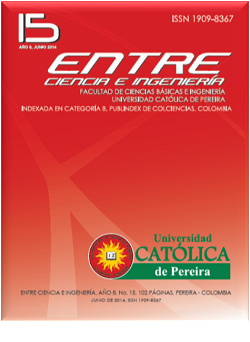Collaboration based on learning styles
Keywords:
learning styles, collaboration, collaborative knowledge construction, Euclidean distanceAbstract
This paper proposes a clustering algorithm basedon the students’ learning styles inventory proposed by Felderand Soloman. This algorithm allows us to identify studentswho have similar learning styles, providing a useful tool tohelp teachers in the conformation of groups for collaborativelearning activities.
References
Millán Valldeperas, E. (2000). Sistema bayesiano para modelado del alumno. Universidad De Málaga.
Velez, J. (2009). Entorno de aprendizaje virtual adaptativo. España.
Duque, N. (2009). Modelo Adaptativo Multi-Agente para la Planificación y ejecución de cursos virtuales personalizados. Universidad Nacional de Colombia.
Peña, C. I. (2003). Un sistema de tutoría inteligente adaptativo. España.
Duque, N., & Ovalle, D. (2008). Modelo de estudiante.
Felder, R., & Soloman, R. (2001). Effective strategies for cooperative learning. J. Cooperation & Collaboration in College Teaching. From ncsu.edu: http://www4.ncsu.edu/unity/lockers/users/f/felder/ public/Papers/CLStrategies(JCCCT).pdf
Felder, R., & Silverman, L. (1988). Learning and Teaching Styles in Engineering Education. From http://www4.ncsu.edu/unity/lockers/ users/f/felder/public/Papers/LS-1988.pdf
Honey, P., & Mumford, A. (2006). Learning Styles Helpers Guide. From http://peterhoney.com: http://peterhoney.com/documents/ Learning-Styles-Helpers-Guide_QuickPeek.pdf
Dunn, R. (1984). Learning Style: State of the Science. From http:// media.cefpi.org/dc2009/LearningStyleStateofScience.pdf
Kolb, D. (1984). Experiential learning: experience as the source of learning and development. From http://academic.regis.edu/ed205/ Kolb.pdf
García Cué, J. L. (2008). Instrumentos para medir los Estilos de Aprendizaje. From http://www.jlgcue.es
Chandler, J. (2010) La historia de los distintos tipos de aprendizaje Recuperado de http://www.ehowenespanol.com/historia-distintostipos-aprendizaje-sobre_103331/








 Revista Entre Ciencia e Ingeniería
Revista Entre Ciencia e Ingeniería .png) entrecei@ucp.edu.co
entrecei@ucp.edu.co.png) ISSN (Impreso) 1909-8367 - ISSN (En Línea) 2539-4169
ISSN (Impreso) 1909-8367 - ISSN (En Línea) 2539-4169 Attribution-NonCommercial 4.0 International (CC By-NC 4.0)
Attribution-NonCommercial 4.0 International (CC By-NC 4.0)
.png) Carrera 21 No. 49-95 Av. de las Américas, Pereira, Risaralda, Colombia
Carrera 21 No. 49-95 Av. de las Américas, Pereira, Risaralda, Colombia